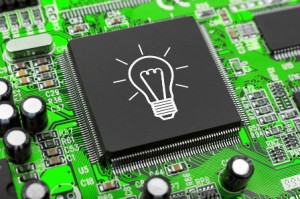
Got the Shakes: Causes and Effects of Vibration in Embedded Computing
Blog
 Picture this: a military company is trying to create a new system to put into the field. It will be used in a mobile communication platform operating in Afghanistan. Within these parameters, naturally there are a number of aspects that the designers need to take into account. Two of the highest ones on the list will be:
Picture this: a military company is trying to create a new system to put into the field. It will be used in a mobile communication platform operating in Afghanistan. Within these parameters, naturally there are a number of aspects that the designers need to take into account. Two of the highest ones on the list will be:
- Heat dissipation: Ensuring that this piece of equipment can retain functionality under the extreme heat of the region
- Dust and sand proof enclosure: Sand can be a real destroyer for embedded hardware, so manufacturers work diligently to use enclosures rated for airtight protection
While these factors should unquestionably have their place at the forefront, there is still a particularly troublesome issue of embedded computing that should be focused on to a greater extent.
Embedded Computing and How Vibration Hurts
In general, industrial computers have to deal with rough environments and are subject to a great deal of movement throughout their usage. The more moving parts there are, the greater the chance of the device sustaining component damage and/or failure. Embedded computing designs need to limit vibration because it increases wear-and-tear and let’s face it: these internals can be expensive to regularly replace. Replacement is also not always an easy option when you’re out in the field.
The most affected component in embedded computing seems to be the hard drive. Most SATA drive use spinning plates for data storage; unfortunately, these types of drives are extremely sensitive to shock and movement. The plates can become scratched or cracked with sudden movement while the disc is in use. This action can result in both the loss of data and the overall functionality of the machine.
Hard drives are just one of the facets of embedded computing adversely affected by vibration. Another major component is the motherboard, which, like any piece of metal, can bend and warp with constant movement. A failed motherboard can completely destroy a machine and render it useless.
How to Combat Vibration in Embedded Computing
 On the surface, it seems like there are very few things that designers can do to fight the rattling inside. But there are a few helpful pieces of advice that can be implemented both in the machine itself and on the design level:
On the surface, it seems like there are very few things that designers can do to fight the rattling inside. But there are a few helpful pieces of advice that can be implemented both in the machine itself and on the design level:
- Minimize moving parts: While it may drive the cost up a little more, components that traditionally have moving parts, such as a hard drive, have analogues that are more resistant to movement. For example, a solid state hard drive can replace SATA drives.
- Incorporate shock resistant chassis: Enclosures can be outfitted to have resistant chassis to hold components in place during movement.
 Brian Luckman is the President of New Era Electronics. He has worked in the industrial OEM market for over 25 years, serving a variety of different industries, gaining a strong reputation for his expertise and a thorough understanding of how to properly service OEM customers. In 2000 he began New Era Electronics and the company continues to grow. He’s a husband and father and enjoys exploring the outdoors.
Brian Luckman is the President of New Era Electronics. He has worked in the industrial OEM market for over 25 years, serving a variety of different industries, gaining a strong reputation for his expertise and a thorough understanding of how to properly service OEM customers. In 2000 he began New Era Electronics and the company continues to grow. He’s a husband and father and enjoys exploring the outdoors.
Creative Commons Attribution: Permission is granted to repost this article in its entirety with credit to New Era Electronics and a clickable link back to this page.




